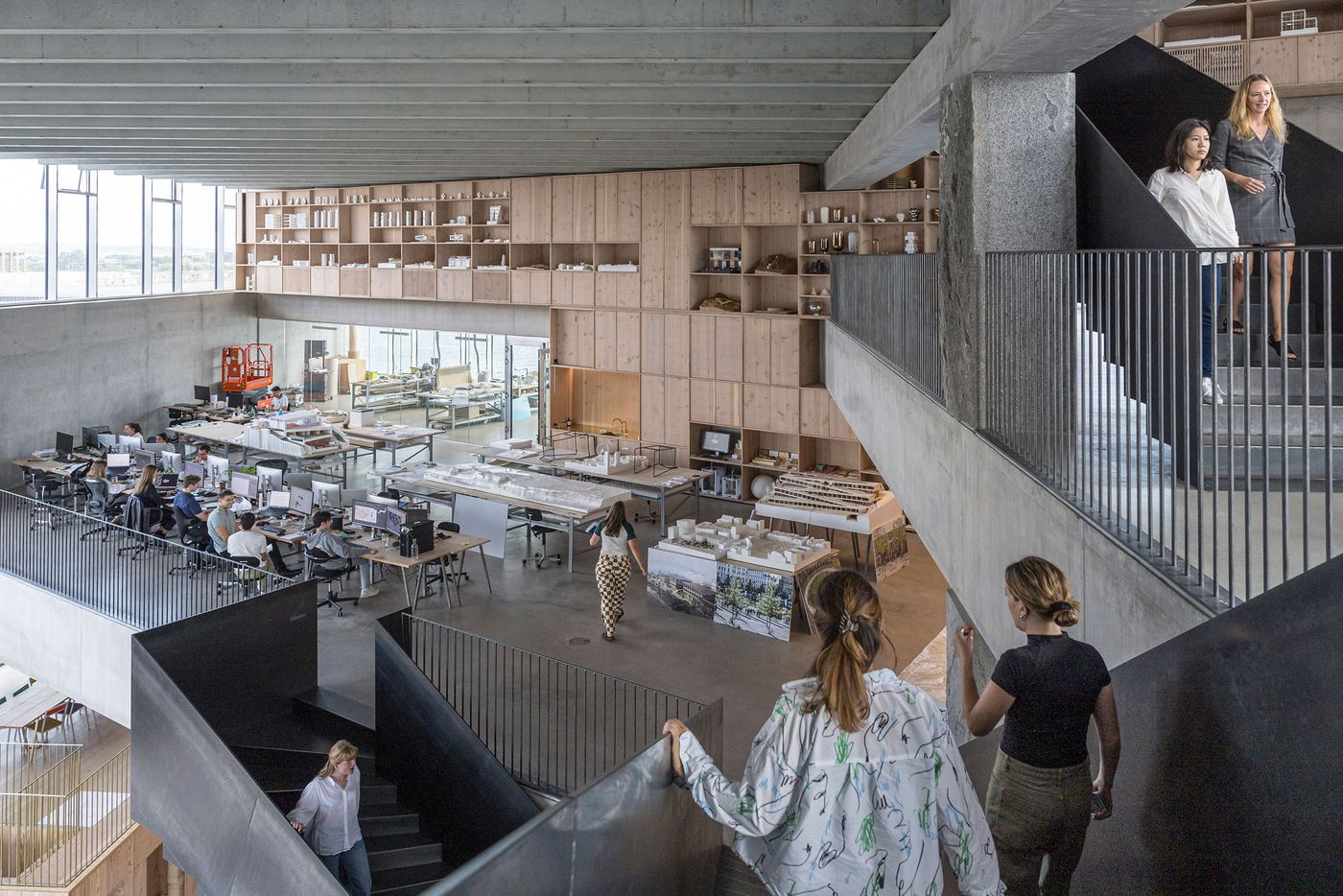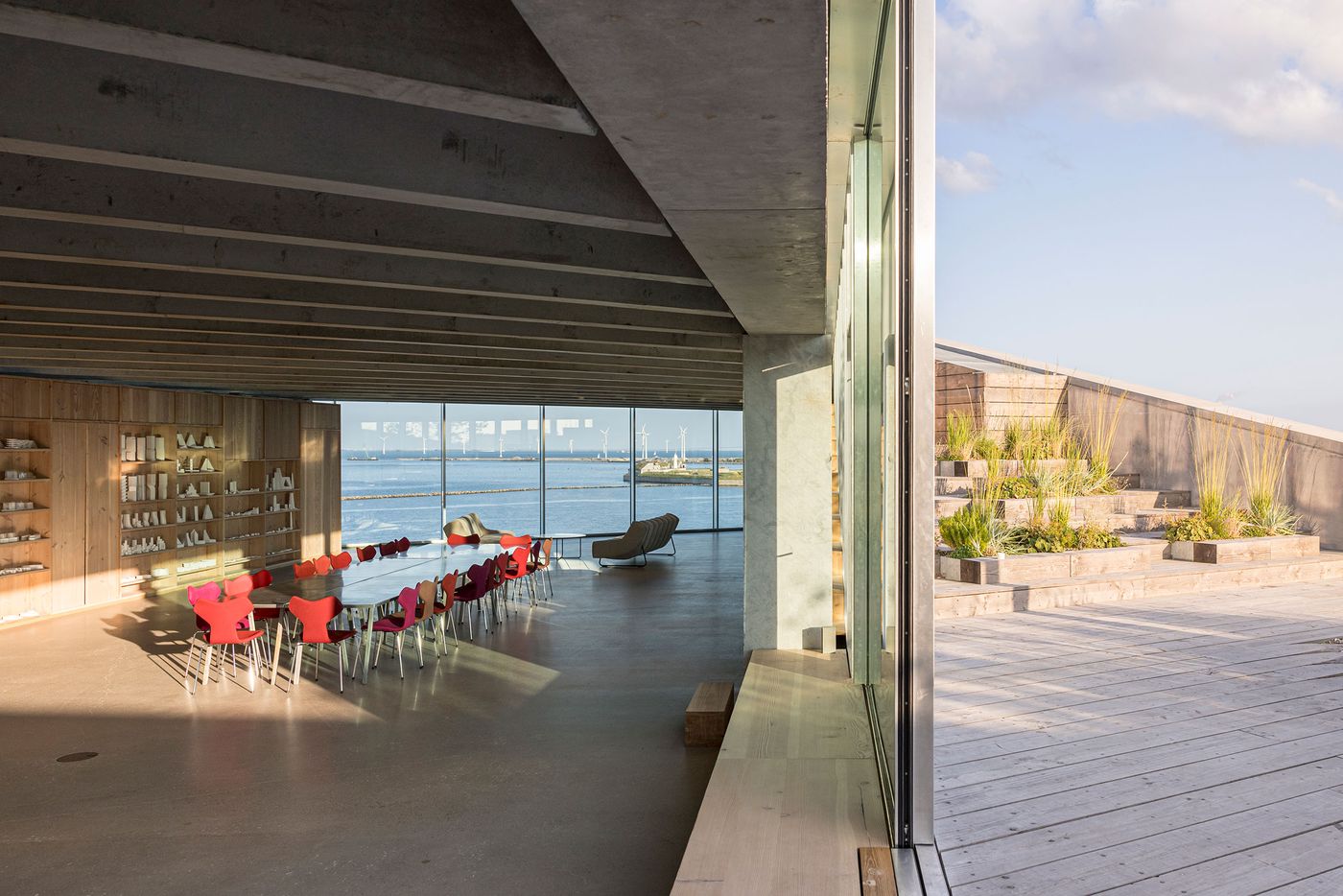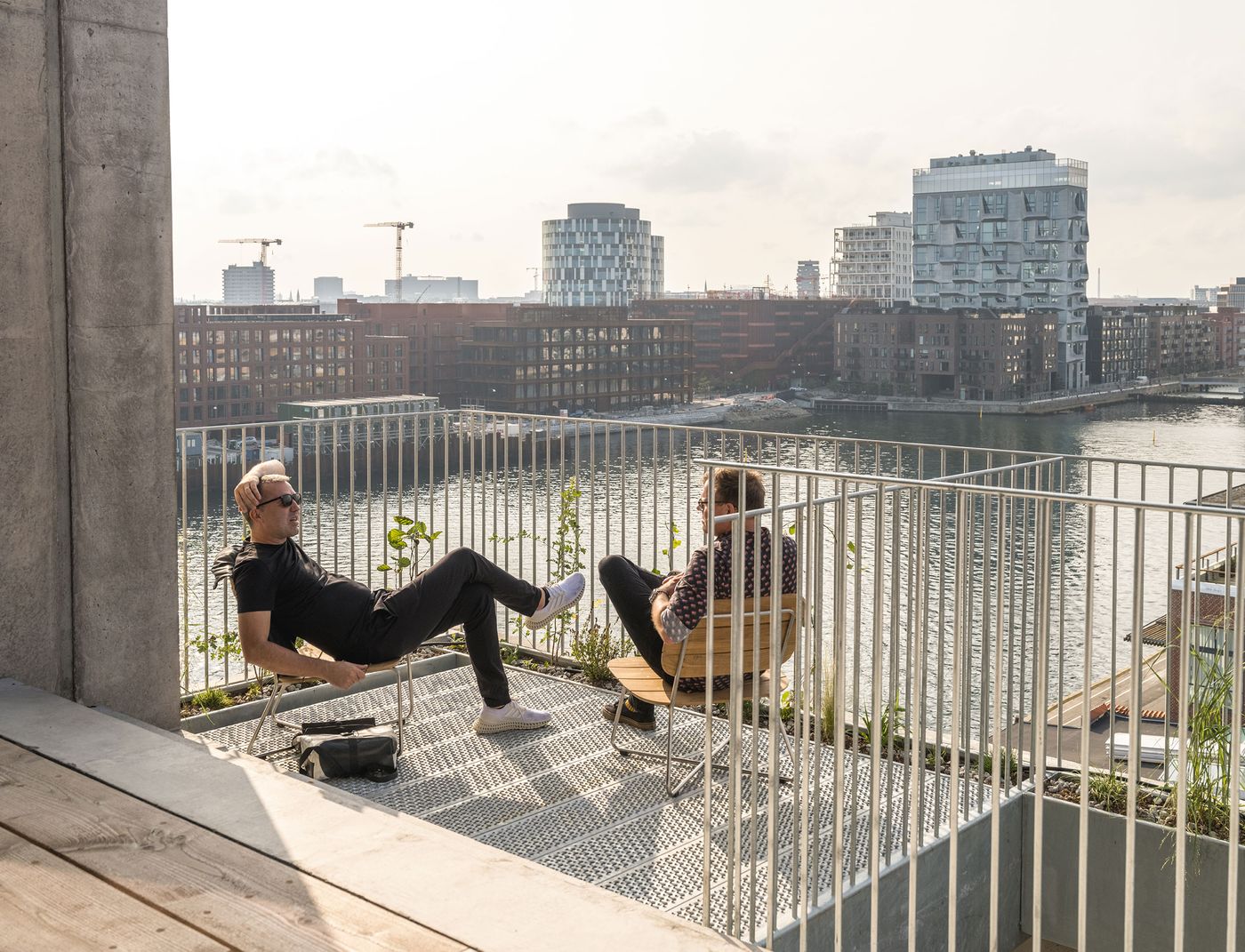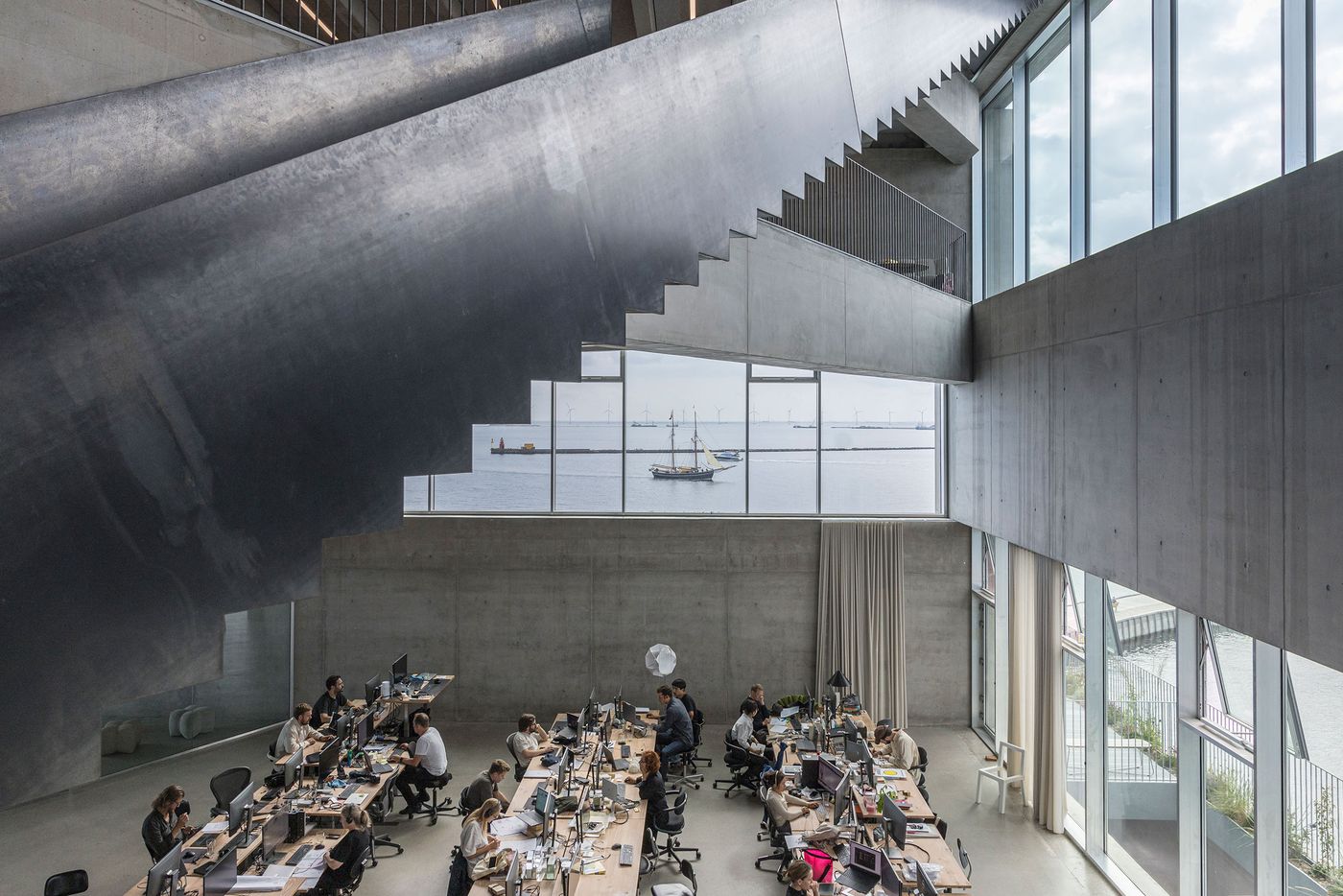
BIG Vision, BIG Impact: The New Copenhagen Headquarters of Bjarke Ingels Group
Words by Yatzer
Location
Copenhagen, Denmark
BIG Vision, BIG Impact: The New Copenhagen Headquarters of Bjarke Ingels Group
Words by Yatzer
Copenhagen, Denmark
Copenhagen, Denmark
Location
Since founding his eponymous practice in 2005, Danish architect Bjarke Ingels has gained a reputation for pushing boundaries, merging form and function to deliver imaginative, forward-thinking architecture. With an emphasis on unconventional, sustainable, and ambitious designs, BIG - Bjarke Ingels Group has grown into one of the most influential architecture practices of the 21st century, with offices in seven cities around the world. The unveiling of BIG’s new headquarters in Copenhagen earlier in the year is the culmination of this design philosophy, embodying its ethos of interdisciplinary innovation and environmental responsibility.

Photography by Laurian Ghinitoiu.
Situated on a narrow pier in Nordhavn, Copenhagen’s old industrial harbour, the seven-story building is one of the studio’s first realized examples of BIG’s LEAPP approach—a collaborative design process that harmonizes the firm’s Landscape, Engineering, Architecture, Planning, and Product Design teams. Built with Uni-Green concrete, an innovative material developed to reduce CO₂ emissions, the seven-story building, home to BIG’s 300 Copenhagen-based employees, pays homage to the area’s industrial history, while exemplifying the firm’s forward-looking approach to sustainability. With a profusion of vegetation integrated throughout, the building is also a masterclass in blending natural and urban environments, not to mention an inspiring environment to work in.
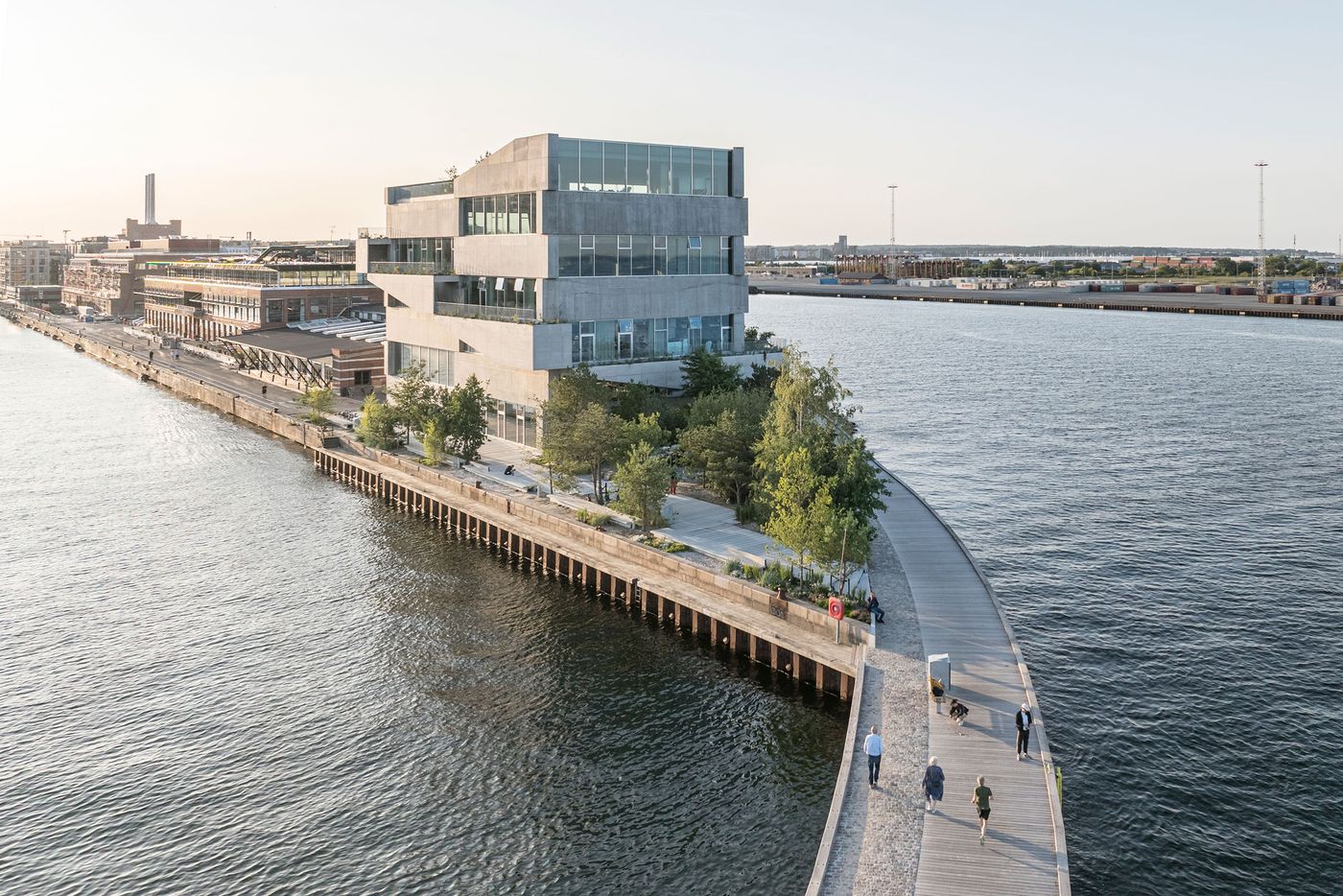
Photography by Laurian Ghinitoiu.
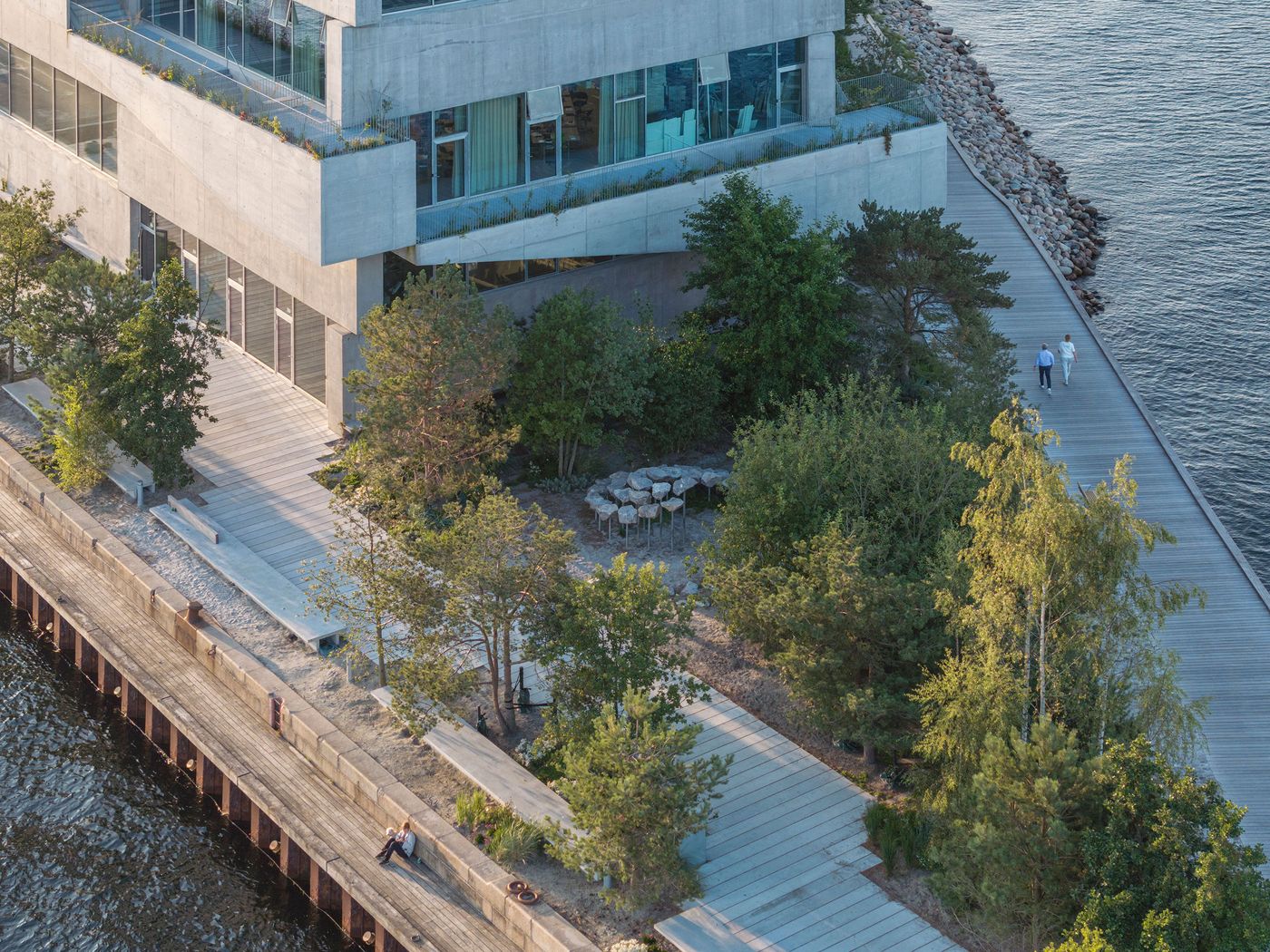
Photography by Laurian Ghinitoiu.

Photography by Laurian Ghinitoiu.
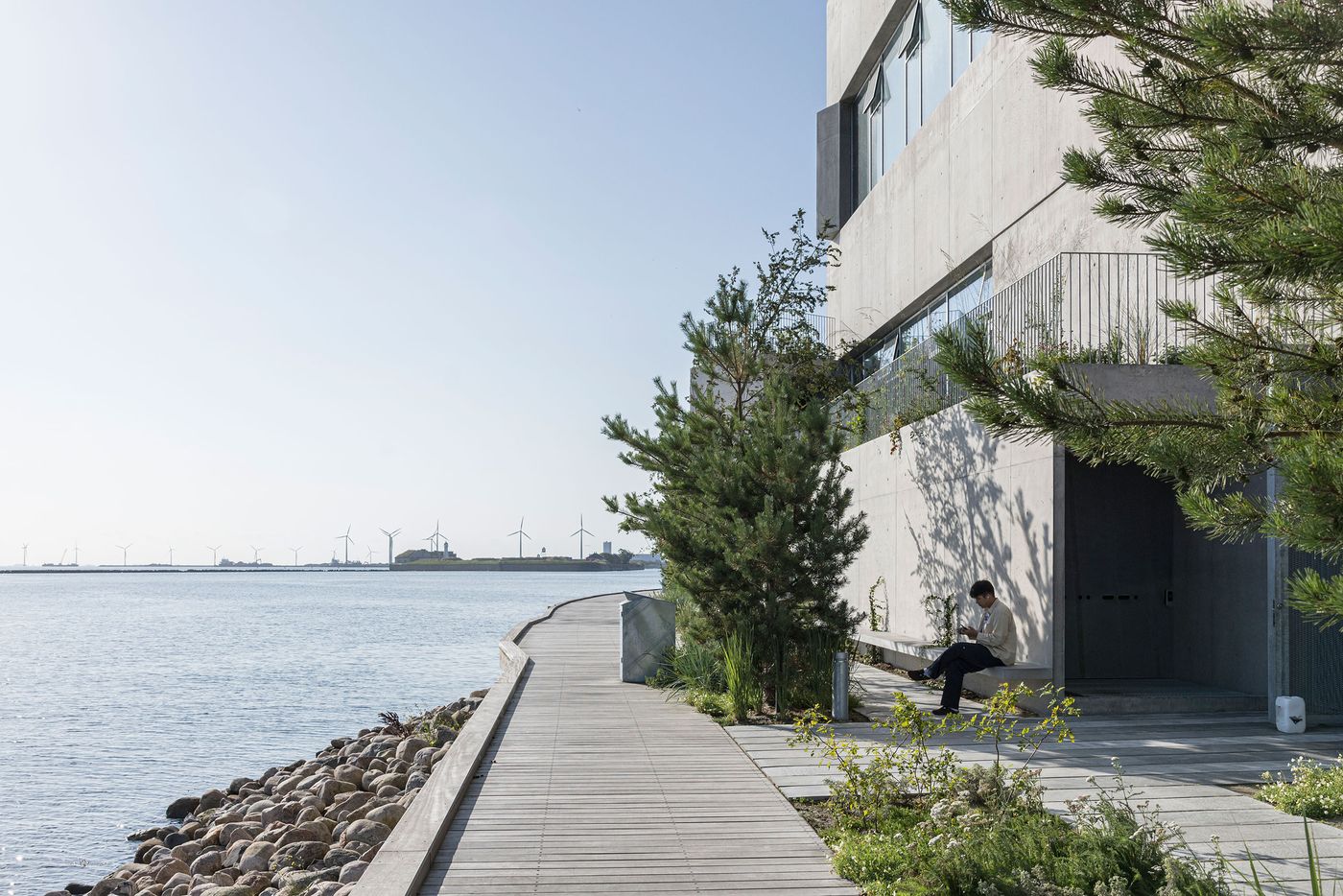
Photography by Laurian Ghinitoiu.
Visitors enter the building through a striking three-metre-tall glass door into a Piranesi-inspired space that reveals the inner workings of the building across all seven floors. A zig-zagging central staircase, crafted from blackened steel, visually and physically connects each level, creating a sculptural pathway through the open interior. At the heart of this space stands a single load-bearing stone column crafted from six different types of Scandinavian rock, ranging from dense granite at the base to porous marble at the top. An impressive engineering feat, the totem-like column rotates on each floor to align with the beams that it supports.
Equally ingenious is the 140-metre-long external staircase that spirals around the building from the quayside all the way to the rooftop terrace. This staircase enables movement between floors along the building’s exterior, functioning as a secondary fire escape while also providing each level with an outdoor terrace. Together with the placement of vertical circulation elements, such as the elevator and secondary staircase, along the building’s northern edge, this design eliminates the need for a traditional core structure, allowing the primary workspaces to remain fluid and expansive, maximizing natural light and unobstructed views.
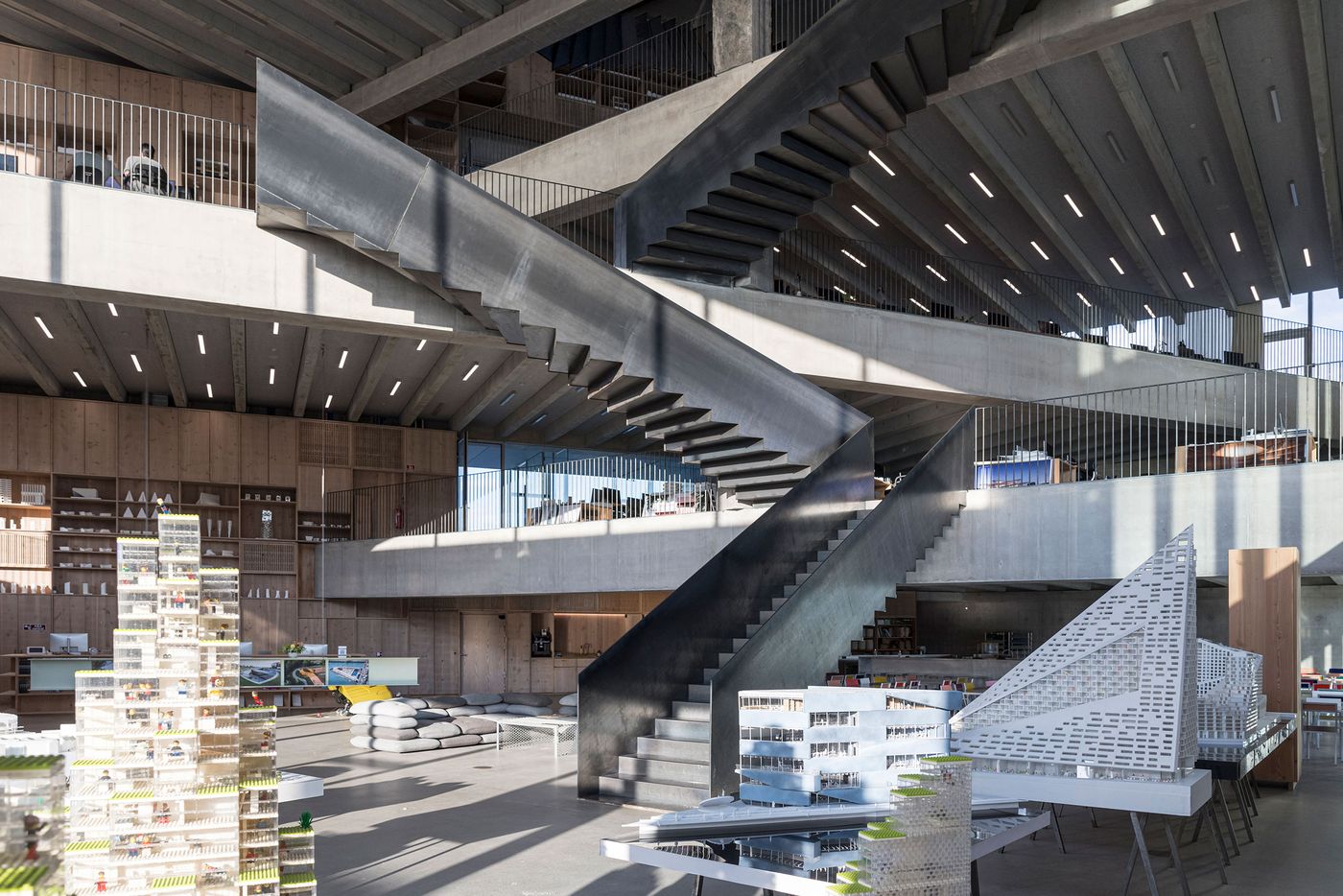
Photography by Laurian Ghinitoiu.
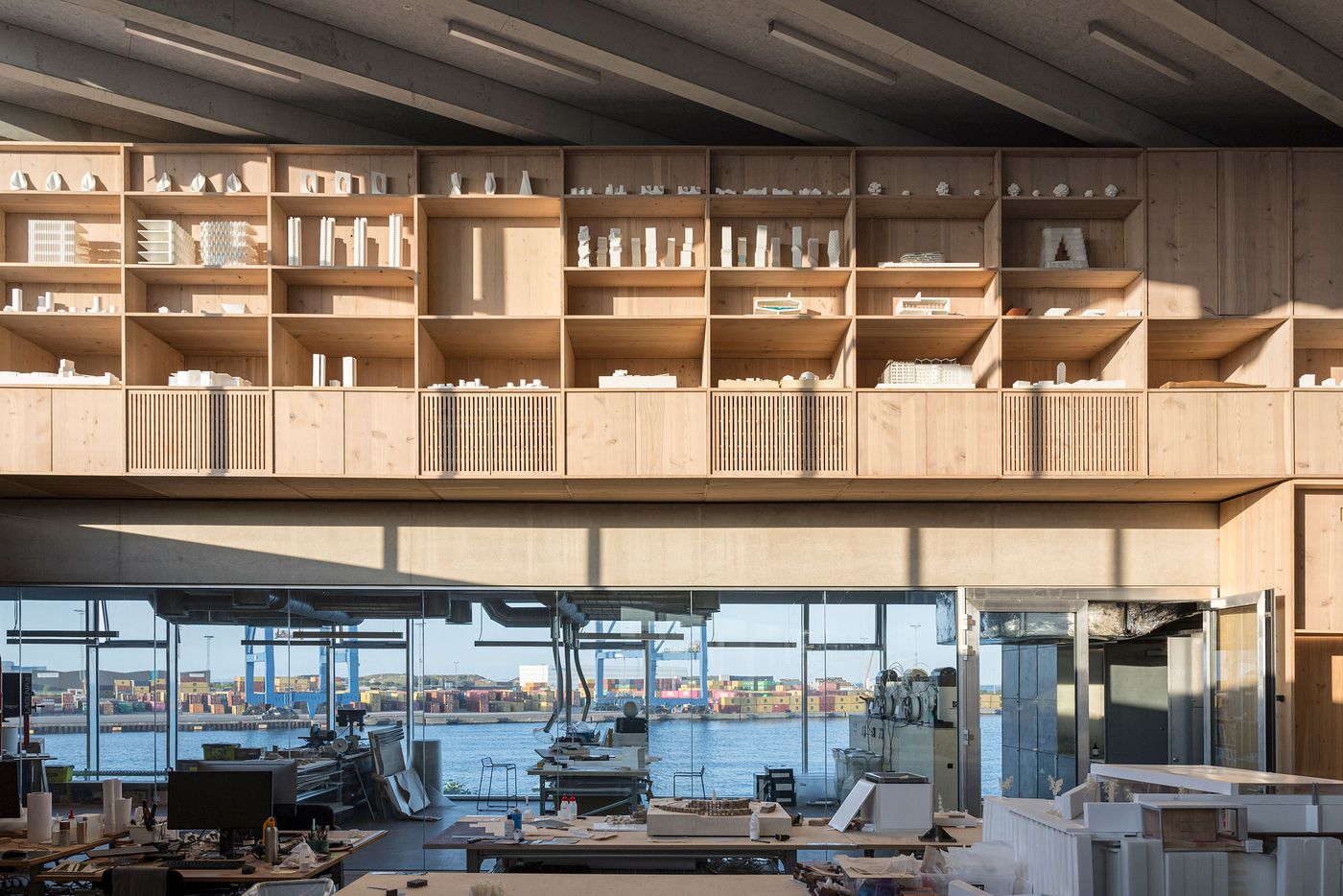
Photography by Laurian Ghinitoiu.
Along the outdoor staircase, a variety of wind-tolerant trees, shrubs, perennials, and herbs—some of which are used in the studio’s canteen—soften the building’s concrete mass. The rooftop terrace, paved with sustainably sourced wood from a local sawmill, extends the natural theme, offering an inviting space where employees and guests can enjoy panoramic views of the city and harbour. At the building’s base, BIG’s Landscape team has transformed a former parking area into a 1,500-square-metre public park featuring native forest trees such as pines and oaks, among which lies a sculpture by American artist Benjamin Langholz, consisting of 40 stones arranged in a spiral form.
As expected, BIG’s new headquarters demonstrates strong environmental credentials, beginning with its pioneering use of Uni-Green concrete—a material developed with Unicon that reduces CO₂ emissions by roughly 25% compared to traditional concrete by replacing part of the cement clinker with calcined clay and lime filler. Moreover, the building is powered by a combination of solar and geothermal energy, covering 60% of its energy needs with renewables. Geothermal systems supply 84% of the building’s heat and all of its cooling, while natural ventilation supports passive climate control.
Blending structural ingenuity, environmental commitment, and contextual sensitivity, BIG’s new Copenhagen headquarters exemplifies the firm’s innovative approach to architecture, setting a new standard for sustainable and socially engaged design.
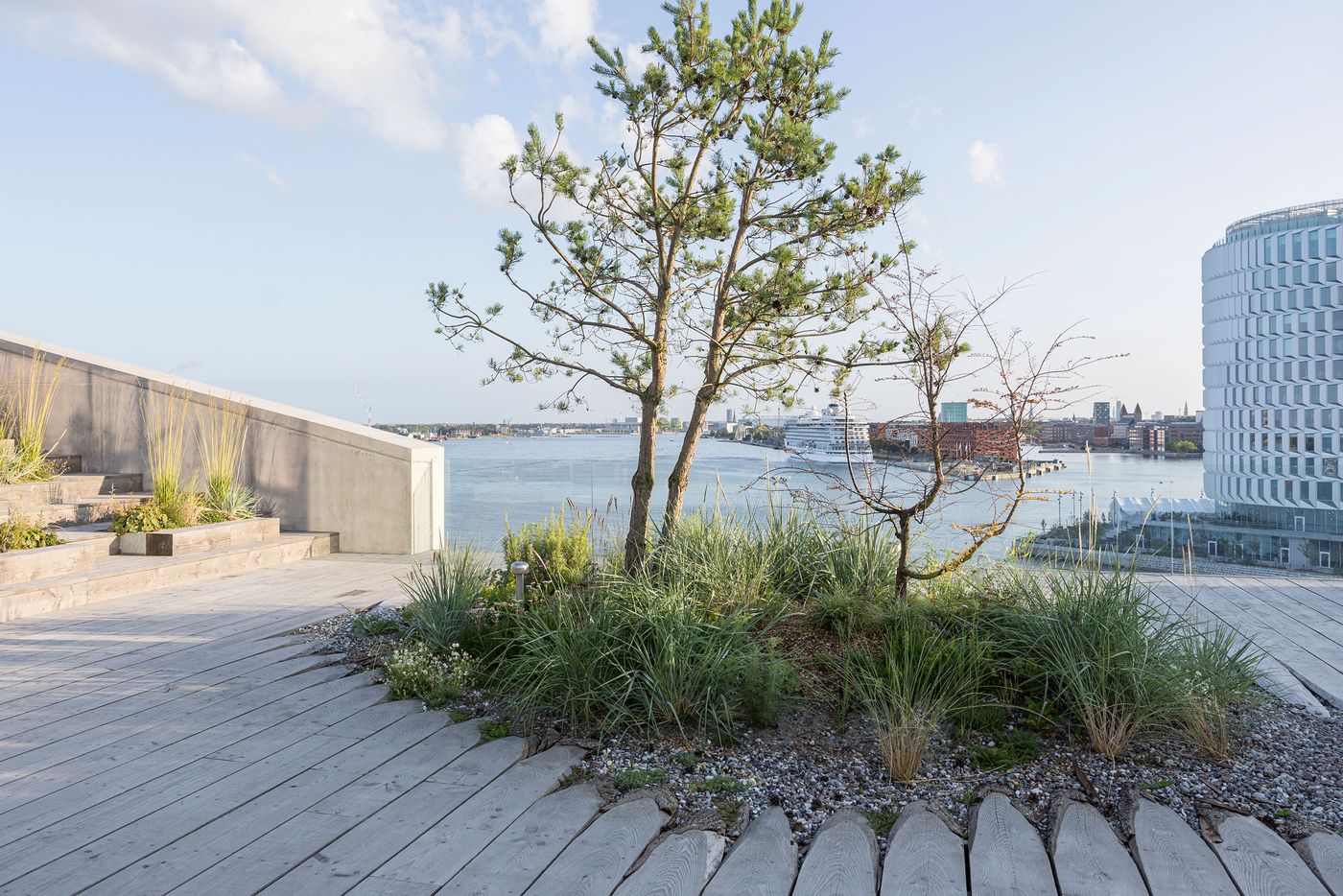
Photography by Laurian Ghinitoiu.
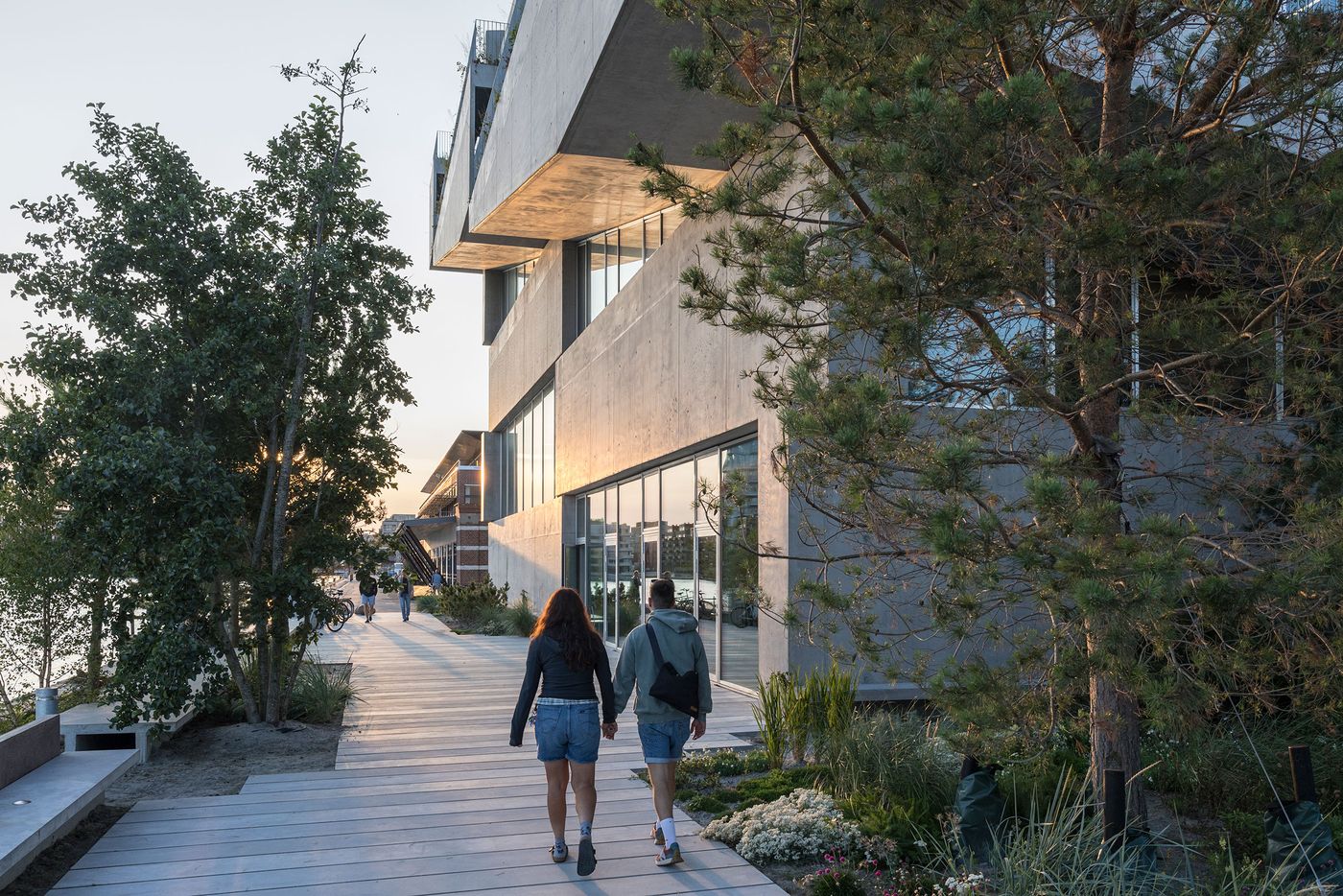
Photography by Laurian Ghinitoiu.
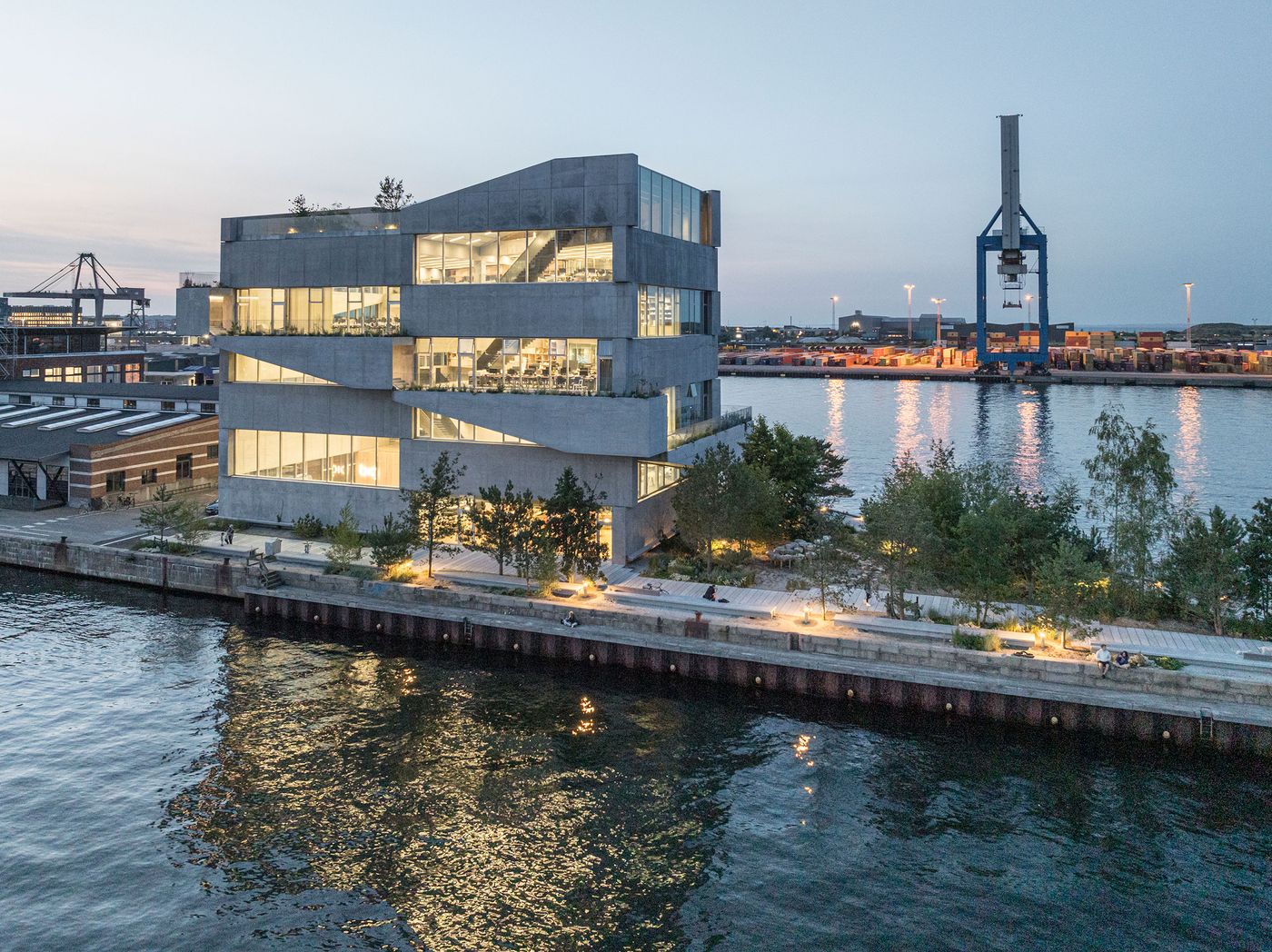
Photography by Laurian Ghinitoiu.
